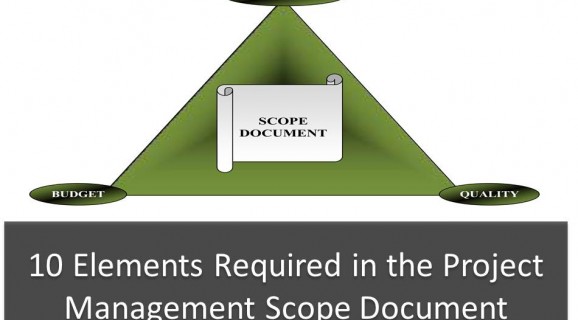
The benefits of a project management scope document
The scope document is a best practice tool used by project management to structure, organise, and progress a project through to successful completion. When properly executed, the scope document will enable a project manager to manage project constraints of time, budget, and quality.
Enabling effective definition of the responsibilities of the project management team and the identification of stakeholders, the scope document also aids the prioritisation of ad-hoc work requests as well as the mitigation of all risks associated with the project. Here we look at the 10 elements required in an effective scope document.
- Summary Statement
The project summary outlines the problem(s) to be addressed, the goals and any specific requirements pertinent to effective project management.
- Summary of objectives and monitoring process
This is a more detailed description of project objectives, defining how will be measured through the course of the project.
- Project deliverables
This scope document element defines dates for completion/ partial completion of each objective, with milestones noted.
- Inclusions/ Exclusions
This details the factors to be included as defined by project objectives. Certain assumptions will be made here, such as the availability of materials required and that staged payments are made in a timely fashion.
- Costs and Schedules
The scope document will include a schedule of works with milestones and the method of feedback and reporting detailed.
- Key Stakeholders
Identification of key stakeholders will allow the tasks and responsibilities of each to be clearly defined, enabling project management to work to schedule and within budget.
- Assumptions and constraints
Project management will need to make certain assumptions when developing the scope document. These may include the availability of key stakeholders and required resources. Constraints should also be defined, as these will be disruptive on time and on budget prject completion.
- Reporting Requirements
Lines of management will need to be defined, detailing what is to be reported, to whom, and in what format.
- Statement of Risks
There will be risks which may disrupt completion of the project as to scope, schedule, or budget. These risks range from failure to agree specifications through to problems with business processes, stakeholder availability, resources, and changes in law or regulations.
- Related Projects/ Dependencies
The relationships between project tasks which cause dependencies will need to be defined here. By establishing these links within the scope document, project management will more ably define stakeholder and resource requirements to keep the project moving to completion.
The importance of a scope document
The scope document is a critical communicative tool which details objectives, resources, and stakeholders and enables project managers to ensure objectives, schedules, and budgets are met. It should be signed and distributed to all key stakeholders, either electronically or otherwise. Any alterations should be documented as amendments without the original scope document being edited. The more purposeful the scope document, the more purposeful the project management.
